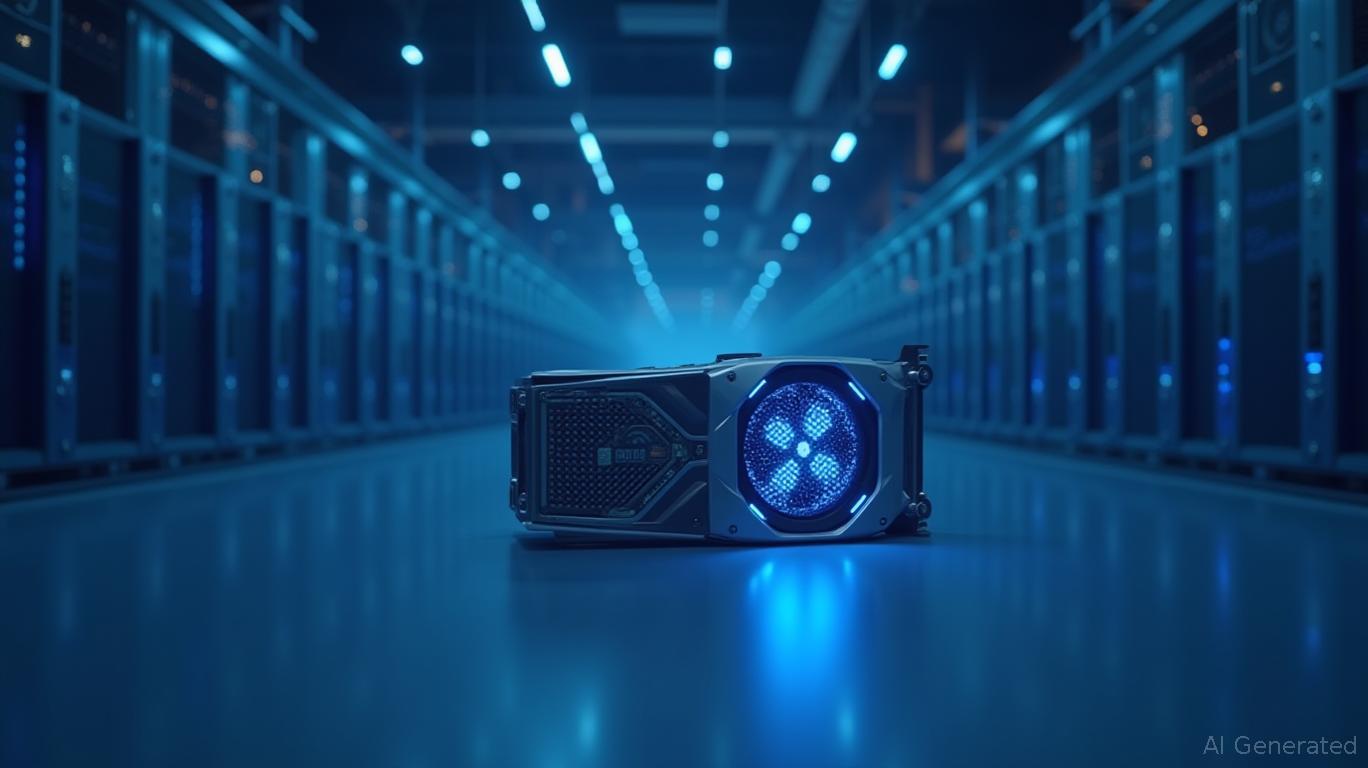AInvest Newsletter
Daily stocks & crypto headlines, free to your inbox
AMD's recent Q2 2025 earnings underscore a pivotal shift in the semiconductor industry: the company is leveraging AI chip demand to challenge its rivals and carve out a leadership position in one of tech's fastest-growing segments. With data center revenue surging 57% year-over-year in Q1 2025 and a strategic focus on AI infrastructure,
is positioned to outperform peers like NVIDIA and Intel in the long term—despite near-term headwinds. Here's why investors should pay close attention.
AMD's AI-driven revenue growth is undeniable. Its Instinct GPU line, including the MI300X and upcoming MI400X, has become a cornerstone of hyperscaler AI infrastructure. In Q1 2025, data center revenue hit $3.7 billion, with Instinct GPUs accounting for a significant portion. By Q2, AMD's EPYC server CPUs held 39.4% of the data center market—a staggering rise from 25% in 2023—thanks to partnerships with AWS, Oracle, and Meta. Microsoft's choice of the MI300X over NVIDIA's A100 for GPT-4 inference highlights AMD's cost advantage, which is critical as cloud providers seek efficiency in scaling AI workloads.
AMD's stock has underperformed NVIDIA's in recent years, but its valuation—currently trading at 11.5x forward EV/EBITDA versus NVIDIA's 23x—suggests it's undervalued relative to its growth trajectory. This gap may narrow as AMD's AI momentum accelerates.
While NVIDIA dominates AI training with its Blackwell and Hopper GPUs, AMD is targeting the $500 billion AI chip market with a dual strategy:
1. Cost Leadership: AMD's Instinct GPUs offer comparable performance to NVIDIA's A100/H100 at lower costs, making them ideal for inference tasks. Microsoft's adoption of the MI300X over NVIDIA's A100 underscores this appeal.
2. Full-Stack Solutions: Acquisitions like Silo AI (enterprise AI software) and ZT Systems (rack-scale expertise) have bolstered AMD's ability to optimize AI clusters. ZT's software reduces deployment costs by 20–30%, a critical edge in the hyperscaler arms race.
In contrast, Intel's AI efforts lag. Its Gaudi3 chip, while cost-effective, lacks the compute density needed for large-scale training. Intel's data center CPU market share has fallen to 31.6%, as AMD's EPYC Genoa CPUs now capture 62.9% of new server instances. Intel's AI revenue remains a “rounding error” compared to NVIDIA and AMD's strides.
AMD's path is not without hurdles. U.S. export restrictions on China-bound GPUs—particularly the MI308X—have slashed projected revenue by $1.5 billion in 2025. NVIDIA faces similar issues, but its Blackwell GPUs' compliance with regulations has softened the blow. Additionally, NVIDIA's CUDA ecosystem retains a 3.5 million-developer advantage, which AMD's ROCm 5.0+ and Silo stack are only now beginning to rival.
Gaming GPU sales, which account for ~30% of AMD's revenue, are also declining due to market saturation. However, this headwind is temporary; the $500 billion AI market offers far more sustainable growth.
AMD's AI strategy is a long-term bet on three pillars:
1. Product Innovation: The MI400X (2026) aims to match NVIDIA's Blackwell in performance while maintaining cost leadership.
2. Software Synergy: Silo AI's enterprise-grade tools and ZT's rack-scale solutions create a sticky ecosystem for hyperscalers.
3. Market Share Momentum: AMD's 35+ AI platforms and 39.4% server CPU share signal structural shifts in favor of its hybrid CPU-GPU architecture.
Analysts project AMD's AI infrastructure revenue to grow at 40–50% annually through 2026, driven by hyperscaler demand and enterprise adoption. This trajectory could push AMD's valuation closer to NVIDIA's over time.
AMD is no longer a “NVIDIA follower”—it's a strategic rival with unique strengths. While NVIDIA's CUDA ecosystem and Blackwell GPUs remain formidable, AMD's cost efficiency, full-stack solutions, and aggressive product roadmap position it as the best play on AI infrastructure outside of NVIDIA.
Investors should consider:
- Long-term horizon: AI adoption is multiyear, and AMD's undervalued shares offer room to grow.
- Risk management: Hedge against near-term export restrictions and gaming declines by dollar-cost averaging.
Historically, a disciplined strategy of buying AMD 5 days before quarterly earnings and holding for 20 trading days has delivered strong results. From 2020 to 2025, this approach generated a 21% compound annual growth rate (CAGR) with 69.88% excess returns, supported by a Sharpe ratio of 0.71, indicating robust risk-adjusted performance. This underscores the potential of timing investments to capture earnings-driven momentum, reinforcing AMD's growth narrative.
In a sector where NVIDIA rules but AMD innovates, the latter is the smarter bet for those willing to look beyond the next quarter. The AI chip race is far from over—and AMD's surge is just beginning.
Disclosure: This analysis is for informational purposes only. Always conduct your own research before making investment decisions.
Delivering real-time insights and analysis on emerging financial trends and market movements.

Dec.17 2025

Dec.17 2025

Dec.17 2025

Dec.17 2025

Dec.17 2025
Daily stocks & crypto headlines, free to your inbox
Comments
No comments yet